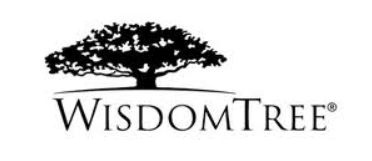WisdomTree Investments – Small Cap ETF Manager with Huge Untapped Potential
SUMMARY
- WisdomTree has been a neglected player in the ETF business with far larger competitors dominating the industry.
- As more investors turn to ETFs, WisdomTree will benefit from the huge inflow of cash over the next decade.
- The company has been investing heavily into new products in order to diversify its revenue while maintaining its margins.
- Introduction
Scroll through the financial media news and one can easily come across articles and financial blogs about how much pain actively managed funds are in at the moment. However, for the savvy investor, it spells an opportunity to invest and take part in one of the largest revolutions in the history of finance.
One of the biggest innovations in the recent years is the exchange-traded fund or ETF. This is because it presents a value proposition of both the mutual fund which brings about a broad ownership of stocks (diversification) and the traits of a stock which brings about liquidity. It is no wonder why these instruments have gained so much popularity over time.

WisdomTree Investments (NASDAQ: WETF), although a smaller company as compared to its larger peers such as Blackrock, State Street and Vanguard, is one of the pioneering companies in this space. It has built a strong brand and cutting-edge products which many investors, individual and institutional, are familiar with.
Much of the financial world has disregarded this WisdomTree Investments although it has built a strong balance sheet and continues to gain market share in its industry.
- The Business
In 2006, the company launched its first ETF, carving out a niche for itself in an industry that is now approximately $4 trillion. Unlike mutual funds, which are priced at the end of each trading day, ETFs can be bought and sold like common stock. And since ETFs are passively managed, expense fees are generally lower than those for actively managed funds. For example, Wisdomtree’s Europe Hedged Equity Fund which has roughly $9.1 billion in asset under management, charges an expense fee of 0.58%. That is relatively expensive for an exchange-traded fund which often charge less than 0.4% but still cheaper than actively managed mutual funds. With a total of $45 billion under management and expense ratios within that ballpark range, the business is able to churn predictable and steady streams of cash flow.
As mentioned before, WisdomTree is competing in an industry dominated by giants. Despite that, the company has gone down a path less travelled by many. Rather than compete on price on mainstream ETFs such as the S&P 500 index which many investors are familiar with, WisdomTree has led the way by crafting a niche for itself in fundamentally weighted strategies. While most ETFs are created and allocated based on market value of the stocks in them, WisdomTree weights its funds based on fundamental factors of a business such as revenue and earnings growth, dividend pay-outs and other factors.
One example of such a fund is WisdomTree U.S. Midcap Dividend Fund. As the name suggest, the fund invests in medium-sized companies with a strong dividend to boot. Since its inception on 16 June 2006, the fund has delivered an annual average return of 9.55%. Compare this with the S&P Dividend ETF which contains a basket of stocks that pays a dividend regardless of their size. The fund has an expense ratio of 0.35% and delivered an annual average return of 8.84% since its inception. As investors are extremely to just 1% difference in returns (after all, we know that 1% compounded over a long time adds up quickly), WisdomTree is able to maintain its edge in a cut-throat industry.
The vigour of the business is hinged on two core drivers: asset under management and the fees in which it can charge. The good news is that most of the costs for the business are fixed. While the size of the fund may double or even triple, it does not mean that costs will too. In fact, it stays relatively unchanged. For now, the company continues to reap the benefits in the shift that is taking place in the financial world to passive indexing approach as the way to invest.
- Risks
The number one risk factor for a business like WisdomTree is the change in market’s sentiment towards stocks. While long-term investors should not care about such movements, the same cannot be said of the rest of the investing world. Inflow into the company’s products are what drive its revenue and ultimately, cash flows. There are mountains of data and research reports that suggest that the global ETF market will reach $7 trillion by 2020. That means there is currently an enormous growth opportunity for WisdomTree. With only $45 billion under management in a $4 trillion industry, that leaves a lot of room for the company to expand its product categories to deepen its moat. However, if it is unable to capture market share, investors ought to be worried about whether the business will prevail.
The most recent example of this is the reduction of asset under management of WisdomTree Japan Hedged Equity Fund and WisdomTree Europe Hedged Equity Fund. At one point, these ETFs make up almost half of the company’s asset management. The company’s asset under management has fallen from more than $60 billion in August 2015 to $45 billion as of October 2017. If the company is unable to diversify away from core products and attract fresh inflows of funds, investors should consider staying away from the business.
Another risk factor is the industry’s race to zero on its expense ratio. Investors are always on the lookout for bargains in order to pay the least possible price for a product. While WisdomTree possesses an edge by crafting a niche for itself, its revenues will be put at risk if the industry decides to drive expense fees close to nothing. The company only owns 1% of the market and lacks the economies of scale at the moment to compete on price. This risk is one that requires constant monitoring on where the ETF market is headed and how competitors differentiate and price their products.
- Conclusion
Investments in ETFs have been growing faster than those in mutual funds as investors have become more comfortable with them. According to Morningstar, over the past 18 years, the amount of assets invested in mutual funds has grown by only 9% year-over-year as compared with 34% growth in ETFs. Roughly a cumulative $1.5 trillion has poured in ETFs since the height of the financial crisis while mutual funds have had a net outflow of approximately a $100 billion.
With this trend on investors’ side, investing in a company like WisdomTree Investments can prove to be a very lucrative decision. At the moment, the market has been focused on the company’s recent under-performance while neglecting investments made in order to pursue long-term success in this business. Since shares are selling for a lot less than its all-time high with a solid dividend yield of almost 3%, investors might be spotting a bargain here.
If you want to learn more about how to find cheap and good stocks to generate passive income for you, click on the picture below to join our Free Value Investing Masterclass.
Marcus Ho
Research Analyst, Mind Kinesis Value Investing Academy
Disclaimer: Please note that all information stated in this article is just for education purpose only and should not be used as any form of recommendation or advice.


